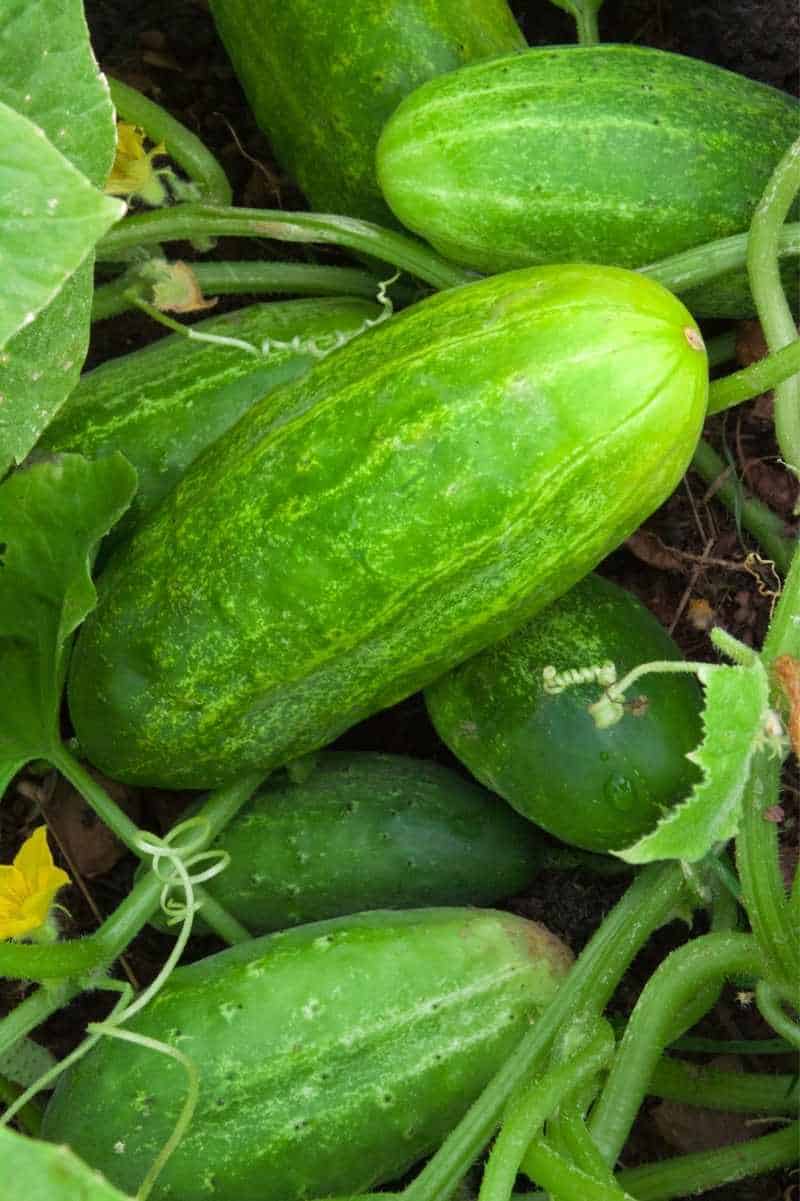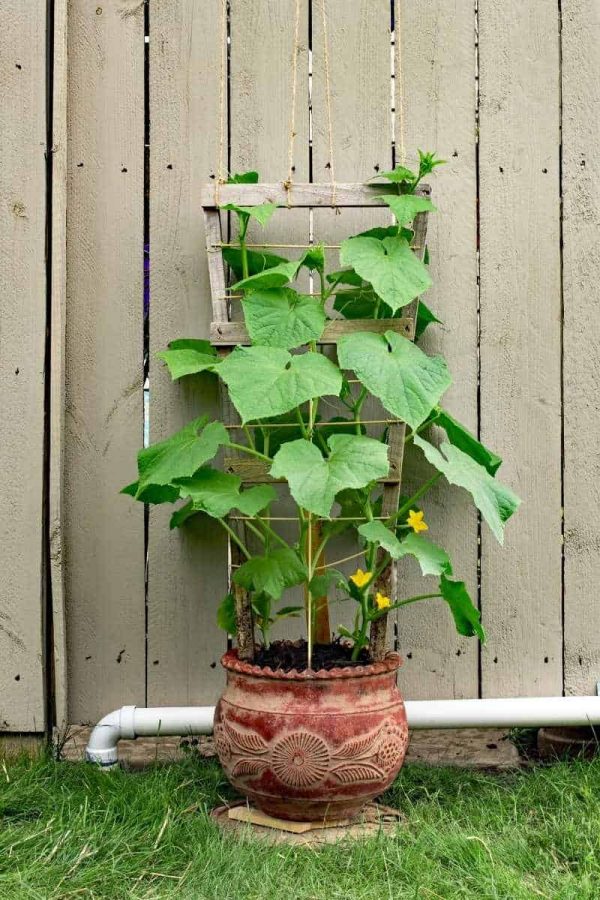Growing cucumbers in a pot is perfect for apartment-dwellers or others with little land. We’ll teach you everything you need to know!
Cucumbers are easy to grow and have lots of versatility in the kitchen, making them a common choice for home gardeners. And while some cucumber plants can be unwieldy and sprawling, some cucumber varieties are well-suited for growing in a pot—so even gardeners with limited space can grow them!
Table of Contents
Can cucumbers be grown in pots outside?
Absolutely. If you’re short on garden space, you can grow cucumber plants in pots and containers. We recommend looking for compact or bush varieties—vine varieties that put out long, sprawling vines won’t produce as well in a pot.
Best varieties for growing cucumbers in containers
Our favorite cucumber variety for containers is Patio Snacker. This bush cucumber plant is nice and compact (though you’ll probably still want a small trellis) and puts out 4″ long mini cucumbers. You can also check out your local nursery or favorite seed catalog for other options—look for cucumber varieties labeled as compact, bush, or otherwise suitable for container gardens.
What is the best size pot to grow cucumbers?
A cucumber pot should be at least 12″ deep to support the plant’s large root system. We like five-gallon containers for larger vegetables like cucumbers.
What containers are suitable for cucumbers?
As long as the container is deep enough and has good drainage holes, it should be suitable for cucumbers. However, plastic or ceramic pots work best, as they will retain moisture better for water-loving cucumbers.

Do cucumbers need a trellis?
It’s not necessary, but it does help, especially if you are working with limited space—trellises will train the cucumber vines vertically, so they aren’t sprawling all over your growing area. Supporting your cucumber plants also encourages airflow, which reduces the risk of disease, and makes it easier to find the growing cucumbers.
We love to use a DIY tomato cage to grow cucumbers in a pot. When you make your support, you can design it to fit your container perfectly.
Do cucumbers need full sun?
Cucumbers love the sun and ideally enjoy six to eight hours of sunlight a day. At a minimum, cucumber plants should get at least five hours of direct sunlight a day.
What kind of soil do cucumbers need?
Cucumbers need well-draining, fertile soil with a neutral pH of 6.0-7.0. Garden soil is too heavy and dense for container growing, so use a potting mix amended with compost to grow cucumbers in a pot instead.

Growing cucumbers in a pot
Like other cucurbits, cucumbers don’t do well in the cold. Wait to plant out cucumber plants until nighttime temps are above 50°F—they will grow best once the temperatures cross 70°F.
Trellised cucumber plants need at least a foot of space between each other. For most containers, you’ll be growing one plant per pot. Cucumbers can be grown from seedling transplants or direct sown from cucumber seeds.
To direct sow, plant three to four seeds in the center of the container at a depth of 1″. Once the plants are four inches tall, use scissors or snips to cut down the weaker seedlings, leaving one plant per pot.
Apply a layer of mulch around the plant’s base and regularly water throughout the season. Weeding will be less of a concern with container gardening, but they can still sneak in there—pull or clip weeds whenever you see them!
Watering, mulching, and fertilizing
Water is super important during the cucumber growing season—cucumbers love water and will turn bitter if they don’t get enough. The plants will need at least an inch of water a week, but more when temperatures are particularly high. Once the plants start to set fruit, increase the water to two inches per week. Water the plants at the base or use drip irrigation to prevent disease.
Organic mulch helps the soil retain moisture and control its temperature. Straw, chopped leaves, or pine shavings are great, affordable choices.
Cucumbers are heavy feeders, so start with good potting soil amended with manure, organic matter, or compost. Organic fertilizer is great, but make sure you don’t over-apply nitrogen. Over-fertilization with nitrogen will give you lush cucumber plants but very few fruits.

How to harvest cucumbers
Harvest cucumbers when they are small and dark green for the best flavor and texture. Use a sharp knife or scissors to remove the fruit from the vine. If you don’t have tools on you, twist the cucumber until the stem comes off the vine. Whatever you do, don’t pull on it! It will damage the vine.
You can never harvest a cucumber too small, but you can pick it when it is too large! If left on the vine too long, cucumbers will begin to turn yellow. The vegetables will become tough with bigger seeds and a more bitter flavor.
Troubleshooting growing cucumbers in a pot
Why don’t I see any cucumbers on my plant?
Usually, this means there is a pollination problem, in that there aren’t enough bees or other pollinators to spread pollen. For a long-term solution, plant plenty of pollinator-friendly plants in your garden. But since that won’t fix the problem immediately, you may need to hand-pollinate your cucumber flowers. Learn how to get pollen from the male blossoms to the female flowers in our big guide to growing cucumbers.
Why are my cucumbers bitter?
Bitterness is a sign of plant stress. It usually means it is unseasonably hot outside or the plant dried out while the cucumbers were forming. To avoid this, increase your watering during especially hot and dry weather.

Cucumber pests and diseases
Insects such as cucumber beetles, aphids, and squash bugs can stunt the growth of your cucumbers or even kill off the plants entirely. But in hot and humid gardens, diseases like cucumber mosaic virus, powdery mildew, downy mildew, blossom end rot, and fungal infections are much more likely to kill off a cucumber crop. Learn how to control and prevent them organically in our guide to growing cucumbers.








